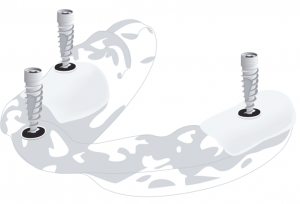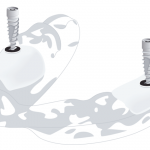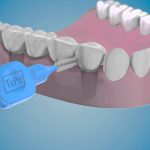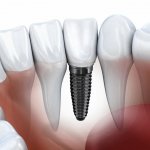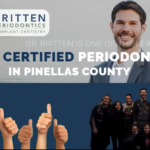Dental Implants, explained:
While regular brushing, flossing, and checkups allow many of us to maintain our natural smiles for a lifetime, sometimes our teeth just can’t keep up. If you’ve lost a tooth (or a few teeth) due to injury or disease, dental implants can rejuvenate both your smile and your oral health.
An implant is a synthetic tooth root in the shape of a post that is surgically placed into the jawbone. The “root” is usually made of titanium (the same material used in many replacement hips and knees), a metal that is well suited to pairing with human bone. A replacement tooth is then fixed to the post. The tooth can be either permanently attached or removable. Permanent teeth are more stable and feel more like natural teeth.
Implants often require planning through the use of CT scans performed in our office, or surgical implant guides, such as the one shown in this video.
When it comes to Dental Implants, Why Choose a Specialist?
We get this question a lot, especially since a lot of general dentists are starting to place more implants. Placing dental implants is often not part of the normal general dentist curriculum. Many general dentists received their training in implant dentistry after graduation where they attend weekend courses or classes and get to place around twenty implants before they begin to implement implant placement in their office.
A graduate periodontal program or residency includes three years of training beyond dental school. During that time periodontal residents are taught the history, science, healing, and proper placement and management of dental implants. An average periodontal resident will place upwards of 100 dental implants during their residency, and are trained to manage surgical complications, including, bleeding, infection, and bone grafting procedures to enhance the success of the procedure. Because of their advanced training, periodontists are often more equipped to provide the success and deal with the complications that may arise when evaluating a patient for implant placement.
Dental implants may be the best choice for an individual whose gum disease has reached the point of infection that can not be treated, and periodontists are the most highly-trained specialist for treatment of gum disease.
Periodontists are also highly trained in the following procedures and skills:
- Removing infection from the implant site – removing infection is one of the most important steps of a dental implant procedure. If an implant becomes infected, the patient may experience extreme levels of pain. Periodontists are able to adequately prepare and treat periodontal disease prior to the implant procedure.
- Implant site monitoring – periodontists are also able to monitor the implant site following the procedure. They are able to recognize any signs of infection, if the implants are successful in integration, and any other issues that may arise with the implant itself.
- As an implant specialist, Dr. Britten is highly trained and experienced in the most advanced and current technologies used for long-term implant health and success. He believes in using the best diagnostic tools as well as the highest quality implants in his practice. Dr. Britten works closely with the best restorative dentists in the Tampa Bay area to obtain the best possible outcome for his patients’ implants. For more information, contact us at 727-586-2681.



